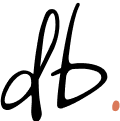We are what we do, consistently: our days are strung together through the momentum of our habits, both good and bad.
Well-intentioned habits can easily become stale or harmful, so being able to spot and remodel them is perhaps one of the most valuable life skills we can learn.
A habit is automatic: it often flashes past our eyes before we know what’s happening. But with a little amplification of awareness, we can break the habit down into three parts:
- Trigger
- Behaviour
- Reward
- Trigger: you feel stressed
- Behaviour: you drink wine
- Reward: you feel relaxed
The degree to which we can discern these three stages is the degree to which we can bring the unconscious action back into conscious deliberation.
Sometimes when we want to shift a bad habit, we imagine ripping it out at the root. We want to be rid of the trigger (the stress), and the whole chain. Or we condemn the reward. But more often than not, the reward is valid—it is just the way of getting there that is the problem.
Avoiding triggers, such as stressful situations, can be helpful at first. If you’re trying not to drink, avoiding the pub makes sense. But triggers will always find you eventually. We need a more resilient approach.
Try this instead: focus on replacing the behaviour.
Write down the trigger, and then write down 5 other behaviours that will get you the same reward. Instead of necking a glass of wine you might:
- Have a bath
- Eat some chocolate
- Watch a show
- Do a 5 minute guided meditation on your phone
- Go for a walk without your phone
This way you are prepared for the trigger. The stress will come, but you now have options. Same stress. Different response. Same reward.
This is a more organic way of initiating habit change. It doesn’t run from the triggers; it just means beating a new path to the reward you seek.
At first, it will feel hard and unnatural, as you’ll literally be forging a new pathway in your mind. But after a while, the path will become worn in. And the association between trigger and behaviour will have weakened.
With the new behaviour in place, you will now have space to become more mindful of the trigger. The damage wrought by the harmful behaviour is safely out of the picture, and the compulsive link between the trigger and the behaviour has been broken.
In this space, more profound change is possible.
Next time you want to change, don’t try and abstain from the reward, yet. Don’t hide from the triggers. Be clear about what it is you want, and find a new way to get there. Swap out the heart of the habit while it’s still alive.
Same trigger, same reward: new behaviour.
Hey you.
Interested in inner work, wisdom and learning?
